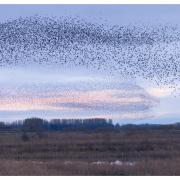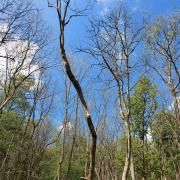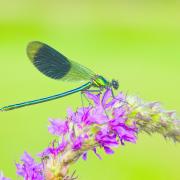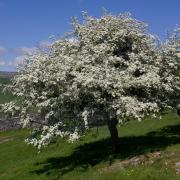Picnickers and rare mammals make themselves at home in South Yorkshire woodlands as Terry Fletcher reports Photographs by Andy Bulmer
It might not be everyone’s idea of a des res but one of Britain’s endangered mammals is moving into some of Yorkshire’s most derelict land and loving it. For more than a century spoil heaps scarred the South Yorkshire skyline, blighting towns and villages, an unavoidable demonstration of where there was brass there was muck. Year after year they grew higher and wider as miners delved deeper and further in search of the coal that underpinned the county’s wealth.
Then in the late 1980s and 1990s the pits closed one after another, leaving economic devastation, environmental dereliction and despair in their place. But now the land is blooming again. Thanks to a blend of government money, Forestry Commission expertise and community effort more than 1,000 acres of woodland has been created across six former colliery sites, creating playgrounds for people and a haven for wildlife.
This spring wildlife watchers in the South Yorkshire Community Woodlands notched up their one 100th new species to colonise the growing forest. Among them have been several rarities that are struggling elsewhere and none has been more surprising than the water vole.
Immortalised as Ratty in the children’s story The Wind in the Willows, they have declined alarmingly in recent decades. Many of their problems have been blamed on the ravages of the bloodthirsty North American mink, animals that escaped from fur farms or were released by animal rights activists.
Scientists estimate that water vole numbers may have dropped by as much as 90 per cent over the last century and captive breeding programmes have been started to try to reintroduce them along riverbanks and in places like the Lake District.
Now, however, to the delight of conservationists, the voles have appeared unannounced and in significant numbers on the restored spoil heaps. Community ranger Emily Holmes said: ‘We have not done anything to introduce them. They just seem to have taken a liking to the woodlands and have appeared in significant numbers.
I come from Norfolk, where you might expect them to be but never see any at all. But here, during the summer months I can go up to Bentley Community Woodland and see them daily, which is just astonishing.’
But they are far from the only surprises among the woods and reed beds created across the old collieries of Bentley, Brodsworth, Hickleton Main, Dinnington, Grimethorpe and Kiverton. A mixture of broadleaf and conifers have been planted and wildflower meadows created and the result has brought surprise after surprise.
Euan Hall, chief executive of the Land Trust, which owns the sites, believes that nationally reclaimed land has a big part to play in providing fresh space for wildlife being hit by changes in land use elsewhere. He said: ‘Reclaimed brownfield land is providing a viable alternative home for a diverse range of wildlife. Because of its former use it can often provide diverse habitats such as shallow pools, margins, hedgerows, meadows and wetlands.’
That certainly seems to be true of the old colliery sites where birds thought to be in decline nationally have been spotted, including various tits and finches, tree pipits, spotted flycatchers and skylarks. Most surprising of all, however, was a marsh warbler, which the RSPB estimates is down to a handful of breeding pairs and most of them in Worcestershire and Kent.
Emily said: ‘Bird populations are considered a good indicator of the broad state of wildlife because they occupy a wide range of habitats and tend to be near or at the top of the food chain. Passing the 100 species mark – and now we are up to about 112 – is a clear sign that these woods are thriving, even though some are less than five years old. I would expect the number of species spotted to probably plateau or go up only slightly until the woods mature a bit more but we are delighted with the progress.’
But one of the species that most delights the trust is the arrival of picnickers. Even a decade ago the thought of a day out on a pitstack would have been laughable but as the woods have taken root more and more people are making use of them.
Dog walkers abound alongside joggers, cyclists and horse riders, not to mention fishermen and young families. Emily said: ‘We are in quite an urban area – a couple of the sites are only a few miles from the centre of Doncaster – and they provide fresh air and green space for the community.
Some people obviously wish they were still working mines but we know from what people tell us that they really appreciate the changes and the opportunities for recreation. Many people are keen to help and we have community volunteers who work on all kinds of projects from hedge laying and bridge building to wildlife surveys and leading walks.
People say they just cannot believe the way the area has been transformed in such a short time.’


























